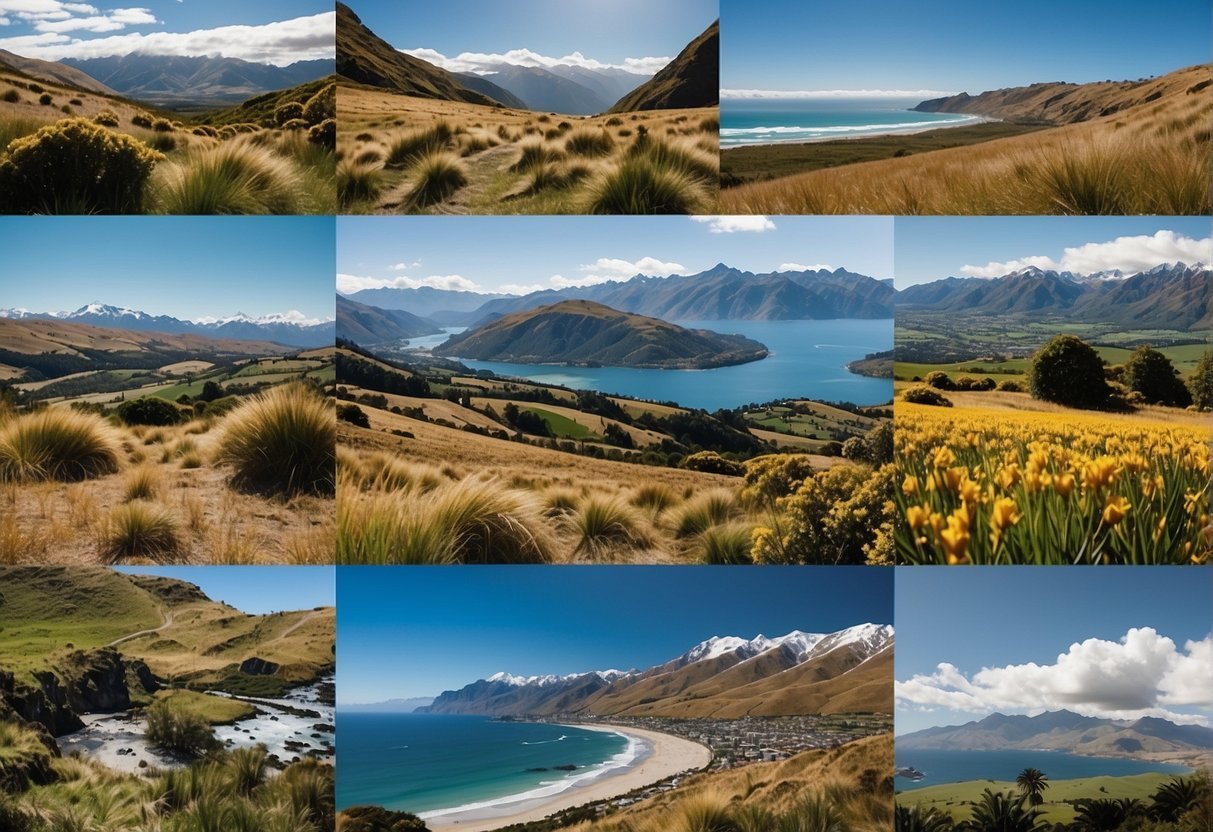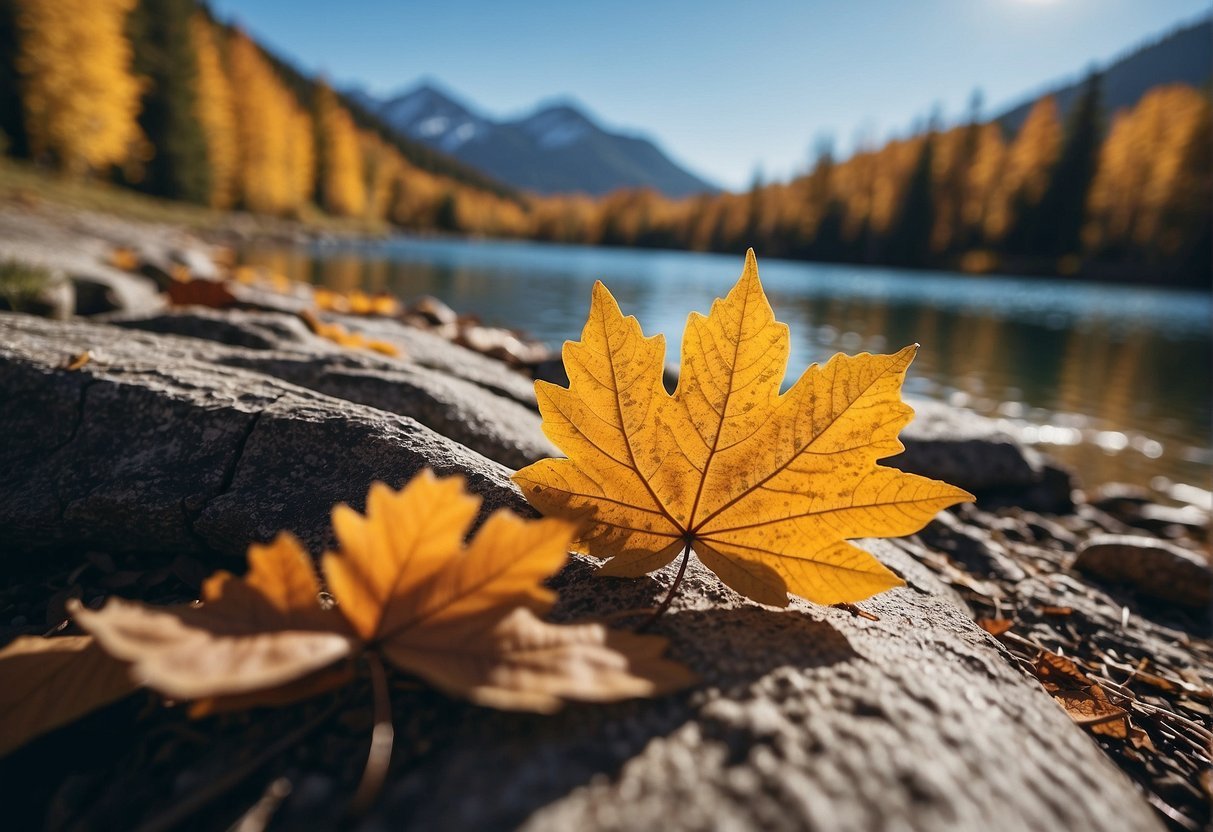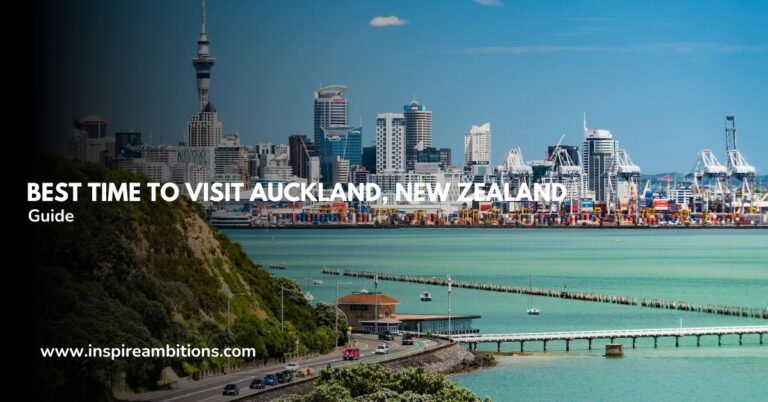When Is the Best Time to Visit New Zealand? Seasonal Travel Guide
Choosing the best time to visit New Zealand relies on the travellers’ preferences and the unique offerings of each season. Summer typically presents the warmest weather from December to February, ideal for beach outings and outdoor pursuits.
The pleasant temperatures, between 20°C and 25°C, make it the most popular time for tourists to visit, especially in the subtropical north of New Zealand, wherehittinbeach is a favourite activity.

However, suppose one seeks a quieter travel experience with cooler, more relaxed weather. In that case, the transition period from March to May might be the goal time this time. The weather is mild, the summer crowds have dwindled, and the ocean remains warm enough for swimming and watersports. For those keen on hiking and enjoying the scenic beauty without the summer heat, this off-peak period could offer the most rewarding experience.
The varying regional climates and diverse year-round activities mean that New Zealand can cater to different types of holidaymakers. Whether one is looking to explore the vibrant cultural festivals, venture into the wilderness, or simply relax in the scenic landscapes, considering factors like climate, regional variations, and tourist density will guide visitors to their ideal travel window.
When Is the Best Time to Visit New Zealand? – Key Takeaways
- Summer offers warm temperatures suited for beach activities and outdoor adventures.
- Autumn months provide mild weather and fewer crowds, which is ideal for comfortable exploration.
- The best visit time can depend on desired activities, regional climates, and cultural events.
Climate and Seasons Overview

New Zealand offers a diverse climate and marked seasons, making it essential to consider the time of year when planning a visit. The country’s weather is influenced by its location in the southern hemisphere and its varied geography, which can result in different weather experiences across the islands.
Understanding New Zealand’s Climate
New Zealand’s climate is predominantly temperate maritime, meaning it has mild temperatures, moderate rainfall, and many hours of sunlight. Key climate characteristics are as follows:
- North Island: Generally warmer, subtropical in the far north.
- South Island: Cooler, with some areas experiencing alpine conditions.
- Rainfall: Varied across regions, the west coast being known for higher rainfall.
- Sunlight: Abundant, with ultraviolet (UV) intensity higher than in many places at similar latitudes.
The Four Seasons in New Zealand
Summer (December – February)
- Temperatures: Average 20°C to 30°C.
- Weather: Ideal for beach visits and outdoor activities.
Autumn (March-May)
- Temperatures: Start to cool, average ten °C to 25°C.
- Weather: Less crowded, a good time for hiking and witnessing autumn foliage.
Winter (June – August)
- Temperatures: Temperatures can drop below 0°C on the South Island.
- Weather: Ski season, particularly in the mountainous regions.
Spring (September – November)
- Temperatures: Range from 10°C to 20°C.
- Weather: Cooler, with spring blossoms and snow in higher altitudes.
In conclusion, New Zealand’s climate varies from subtropical in the northern parts to continental and alpine in the southern parts. Summer brings warm and ideal conditions for outdoor activities, while winter offers the perfect skiing and snowboarding conditions. Autumn and spring provide mild temperatures perfect for hiking and sightseeing.
Best Seasonal Activities

New Zealand offers a dynamic range of activities that align with its four seasons. Travellers will find each period brings unique opportunities to enjoy the country’s natural beauty and cultural events.
Summer Delights from December to February
December to February marks New Zealand’s summer, featuring warm weather ideal for:
- Beaches: Coastal regions become prime spots for sunbathing and water sports.
- Hiking: Trails in national parks provide breathtaking vistas, including the famous Great Walks.
- Outdoor Activities: Kiwis embrace the outdoors with picnics, festivals such as Gisborne’s Rhythm & Vines, and other summer events.
Autumn Colours and Festivals
March to May brings the autumn, which is celebrated with:
- Wine and Food Festivals: Events like the Wildfoods Festival highlight local delicacies.
- Vibrant Scenery: Vineyards and forests display a tapestry of red and gold.
- Mild Temperatures: Perfect for outdoor pursuits without the intensity of summer’s heat.
Winter Sports and Adventure
From June to August, winter’s grip introduces:
- Skiing and Snow Sports: Mountain ranges become havens for ski enthusiasts.
- Indoor Cultural Activities: Museums, galleries, and wineries offer retreats from the cold.
- Festive Atmosphere: Towns often host winter festivals celebrating the cooler climate.
Spring Blossoms and Outdoor Pursuits
As spring unfolds from September to November:
- Blooming Landscapes: Parks and gardens burst into colour, inviting nature walks.
- Outdoor Pursuits: Warmer weather and longer days make hiking and outdoor exploration perfect.
- Lambing Season: Rural areas come alive with newborn lambs, an endearing sight for visitors.
Regional Variations
New Zealand’s landscape offers diverse environments, with each island presenting its climate, actions, and optimal visiting times. Understanding these regional nuances can significantly enhance one’s travel experience.
North Island Highlights
The North Island is home to New Zealand’s largest city, Auckland, where an urban atmosphere meets stunning coastal scenery. Visitors often enjoy mild temperatures and a variety of landscapes, including the idyllic Bay of Islands and the geothermal wonders of Rotorua. Locations and attractions of interest:
- Auckland: Best visited from December to March for a lively urban ambie and pleasant beach weather.
- Bay of Islands: Optimal during the summer months for sailing and water activities.
- The Coromandel Peninsula is ideal for pre-summer warmth and outdoor exploration. In late spring, Rotoruatoru is a year-round destination, with geothermal attractions unaffected by seasonal changes.
South Island Attractions
The South Island is renowned for its majestic mountains and fiords, notably around Queenstown and Fiordland. Winter sports enthusiasts flock to this region during the colder months, while the temperate springs and autumns are perfect for hiking and sightseeing. Key locations include:
- Queenstown: A premier winter destination (June-August) for skiing, with the adventure scene buzzing in summer for bungee jumping and jet boating.
- Fiordland: Home to the awe-inspiring Milford Sound, which can be visited throughout the year but is particularly captivating with the waterfalls during the rainy season.
- Christchurch: Displays picturesque autumns and has a rich urban appeal.
- Kaikoura: Great for marine wildlife spotting, mainly from October to March.
- Lake Tekapo: Provides stellar stargazing opportunities, especially during the colder, clearer winter nights.
- Wanaka: Offers year-round outdoor activities, bringing a unique charm to the region each season.
Accommodation and Crowds
When planning a trip to New Zealand, considering where you’ll stay and when you’ll visit can significantly affect your experience. Accommodation options may be scarce during peak seasons due to high tourist volumes, and events can increase demand significantly.
Booking the Best Accommodation
Choosing where to stay in New Zealand requires consideration of both timing and location. Hotels and other lodgings are most in demand during the peak season, which runs from December through February and coincides with the summer school holidays. Booking accommodation well in advance during these months is crucial:
- Early bookings: Ensure you have more choices and possibly better rates.
- School holidays: Check the local school holiday calendar, as hotels often fill up quickly during these times.
- Significant events: Be aware of national events or festivals, which can cause a spike in accommodation demand.
Understanding the ebb and flow of tourist traffic throughout the year can help plan your visit.
- Peak Season (December – February): Characterised by warm weather and high tourist presence, leading to crowded attractions.
- Accommodation prices are at their highest.
- Popular sites are the busiest, meaning longer wait times.
- Shoulder Season (March to May; September to November): Offers a balance with fewer crowds and milder weather.
- Hotels may offer more competitive rates.
- Smaller crowds at attractions make for a more relaxed experience.
Remember that during peak times, the influx of domestic and international tourists can lead to a shortage of available rooms, so booking is paramount. Conversely, visiting in the shoulder seasons can provide a more tranquil and cost-effective holiday.
Cultural Events and Holidays
New Zealand’s vibrant cultural scene and festivities are tightly woven into the fabric nation’s fabric events, allowing visitors to experience the country’s rich heritage and contemporary culture.
National Holidays and Festivities
- Waitangi Day (6 February): This significant national holiday commemorates the signing the Treaty of Waitangi, New Zealand’s founding document. Celebrations include cultural performances and ceremonies across the country.
- Matariki: Marking the Māori New Year, Matariki is observed with the rising of the Pleiades star cluster. Communities host events honouring Māori culture, including kapa haka, storytelling, and feasts.
- Easter: Occurring in either March or April, this holiday period is celebrated with various festivals and events despite New Zealand being largely secular.
- Christmas (25 December): New Zealand celebrates Christmas during the summer, with barbecues and beach outings being common traditions.
- New Year: Parties, fireworks, and events like Rhythm & Vines in Gisborne welcome the New Year.
Food and Wine Celebrations
- Wellington on a Plate: Spanning several weeks, this culinary festival showcases Wellington’s gastronomy with special menus, food markets, and cooking competitions.
- Restaurant Month: In Auckland, during August, this event offers diners a chance to experience the city’s culinary offerings through special deals and menus.
With these cultural events and holidays, visitors can immerse themselves in the essence of Kiwi life and celebration. Whether through historical reflection or gastronomical indulgence, there’s a uniquely New Zealand experience.






